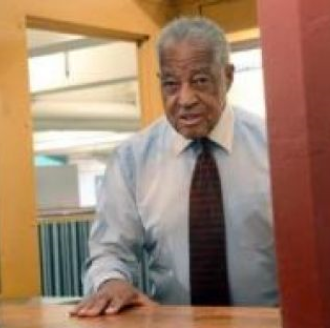Last week I offered a theory as to why retail investors may not be interested in rates of return, and it resulted in numerous comments from readers.
As I was preparing this post, I read the following in an “Op Ed” piece in today’s WSJ, by David R. Henderson, titled “The Man Who Resisted ‘Blackboard Economics’“:
The ability to convey economic, as well as financial and investment, ideas without the aid of mathematics is important, though we cannot lose sight of the importance of numbers. In the brief paragraph above, note the number of numbers that appear (102, 20, 1991, 75, 12)!
What actually served as the genesis of this piece were two events that were highlighted this past weekend.
The first was about Thomas Merrick, someone no doubt unfamiliar to most folks. He spent 65 years working for a railroad and just retired at age 91. He was a World War II veteran. This article
impressed me because of this individual’s desire to continue to work, long past the time when many retire (at the present time I have no plans to retire, and so glory in such stories). Here we learn how long he worked (65 years) and his age at retirement (91). Numbers are the way we convey important facts; to say that this “old guy” finally retired after working for “a long time” is lacking important details. Without numbers, we’re unsure about how old he was and for how long he worked; plus, one might find the characterization a bit insulting.
The second is about Diana Nyad, the 64-year old woman who swam from Cuba (my mother’s birthplace, by the way) to Florida, through shark-infested waters, without a cage; the first person to do
this. She covered a distance of roughly 110 miles in 53 hours, and this was her fifth attempt. Again, we see the use of numbers to provide key details about this woman’s feat. Would the story be as good without them? Hardly.
Math matters … a lot.
Someone posted the following puzzle on LinkedIn:
Well, I guess I am a bona fide genius, as I solved it in less than two minutes. But seriously, only one out of 100 folks can? I’m a bit suspicious about this claim. Granted, it does require some degree of analytical skill, but I’d be surprised if the actual number wasn’t higher. And, to suggest that by solving it you’re a genius is a bit hyperbolic, no doubt.
Although my fondness for mathematics has been part of my DNA forever, I also value the ability to communicate without and/or about the numbers in a meaningful way. I think for many performance measurement professionals, this can be a challenge. At next year’s PMAR conferences TSG will have sessions on this subject: the ability to add insight to the performance measurement results.
I think this is a critical part of being a performance measurement professional; i.e., it not just about the numbers. (Okay, it’s mostly about the numbers … Or perhaps not! A debate topic, perhaps!)
p.s., Speaking of geniuses, I like this quote from Polish-American mathematician Mark Kac: “An ordinary genius is a fellow that you and I would be just as good as, if we were only many times better. There is no mystery as to how his mind works. Once we understand what he has done, we feel certain that we, too, could have done it. It is different with the magicians … the working of their minds is for all intents and purposes incomprehensible. Even after we understand what they have done, the process by which they have done it is completely dark.” Our industry is blessed to have both “ordinary geniuses” as well as a few “magicians.”





